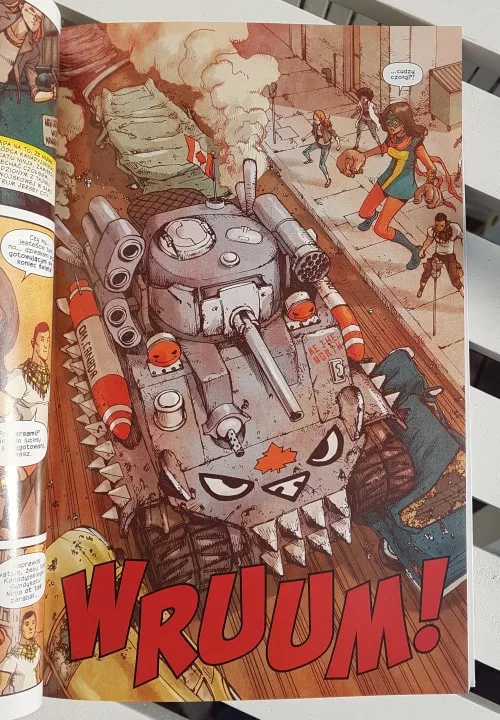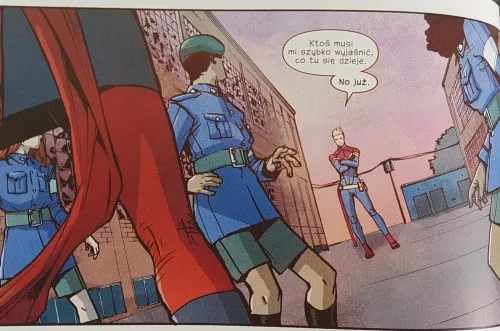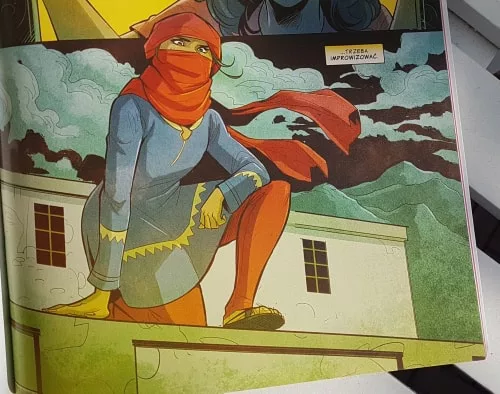It's no secret that while the MCU is shining triumphs and beating records in attendance and box office, Marvel's comics have a growing problem with marketability. One medium seems to have minimal translation into the other. Miss Marvel, in the sixth volume of her adventures, has to face not only opponents, but also the problems consuming the entire comic book market.
There were many ways to overcome the difficulties of discounting film successes. While some deserve praise (such as increasing diversification and trying to reach new readers), others have proven to be a failure in the long run. Such a problematic initiative was betting on crossovers. Lots of crossovers. After which “nothing should ever be the same”. While in the past such events (started in Marvel in 1984 with Secret Wars ) proved to be something special, in recent years one great event is chasing another. And contrary to loud announcements, they simply boil down to another murder with a lot of superheroes, which leads back to the status quo anyway.

War. Civil war never changes.
Civil War II is one of those unfortunate crossovers. The event that preceded it – the first Civil War (2006-2007) – had many problems, although it is remembered quite warmly by fans. Its premise was a conflict over the US government’s superhero identity disclosure and registration act. This led to a division into two camps: under the leadership of Iron Man (a supporter of the registry) and Captain America (for whom the idea was a violation of civil liberties).
Ten years later, another conflict arises. What is its nucleus? With the cinematic premiere of Captain America: Hero Wars at the House of Ideas, there is a need to discount the success of the MCU … Oh, wait. It was like that in the real world. And in the pages of the comic, the cause of the commotion turns out to be a new Inhuman – Ulysses, who is able to detect the crime before it happens (someone in Marvel must have been a fan of the Minority Report ). This time it is Tony Stark who shows a strong moral compass, because he recognizes that you cannot punish someone just for wanting to commit a crime. Meanwhile, Captain Marvel (apparently “it’s a Captain thing”) claims that if there is even a shadow of a chance that a crime will occur, it is worth intervening preventively.

War girl
The sixth volume of Ms Marvelis the so-called tie-in of this event. A side comic, somehow related to the event, but responsible for one aspect that more or less influences it. I’m a big fan of Kamala’s previous adventures. This is the only Egmont title that I am constantly buying. The story of a young superhero who is both an ethnic minority and a geek was a breath of fresh air. Though here, too, the comic’s initial power was losing momentum. I have the impression that the more often Kamala is pushed into the marvel mainstream and combined with other heroes from the House of Ideas (including the unfortunate Inhumans, then pushed everywhere instead of the X-Men), the more she loses her unique character. So how does the latest volume of the series fare, the basic assumptions of which are already causing a red alert in someone who does not know the main event?
In the previous installment of her adventures, Kamala joined the Avengers. New superhero duties turned out to be more and more difficult to reconcile with private life (school and brother’s wedding). Chronic exhaustion also accompanies her in the sixth volume, where Captain Marvel assigns her custody of cadets who capture potential criminals from Ulysses’ vision. After the initial enthusiasm for the new function, one’s conscience quickly comes to the fore. Kamala learns that blindly following your idol doesn’t always make sense.

Ulysses Report
The main thread of the story is also its weakest part. And it could have been so beautiful. Kamala Khan assumed (or even appropriated) the Miss Marvel title as an expression of admiration for her favorite heroine – Carol Danvers. Therefore, a confrontation between a fan and an idol, full of disappointed expectations on both sides, should be a self-play. Especially that in this particular case the tie-in seemed to fit perfectly into the plot of the whole Civil War 2 . And yet the dispute in question is summarized over a very small number of pages. The main opponent is not Danvers, but one of the cadets who blindly believes in Ulysses. At the same time, from the very beginning, the Captain Marvel website is presented in a negative light, which makes it difficult to talk about a nuanced conflict here.
I can only guess where this state of affairs comes from, but it seems that G. Willow Wilson devoted only minimal resources to crossover threads – just enough to fit into the broader plan of the release. On the other hand, many pages are devoted to flashbacks, showing the hardships of the Khan family over the centuries. From the fate of Kamala’s grandparents during the division of India, which resulted in the creation of Pakistan (which resulted in huge resettlement actions), to the hardships of her parents who decided to move with their young children thousands of kilometers further to another continent. These elements greatly enrich the series, which from the beginning does an amazing job of showing the toil of immigrants who are in this particular case too Pakistani for Americans and too American for Pakistanis. Kamala’s hometown never had a good press, so showing ordinary people, their tragedies and dilemmas is extremely important in a larger context. And all this is interwoven with the thread of an increasingly disintegrating relationship with a childhood friend and would-be boyfriend – Bruno (about whom there are flashbacks too!) – for whom Kamala has stopped having time.

Backpack with a unicorn-sloth and other delights
Two artists are responsible for the visual side. The first chapter and Pakistani flashbacks were created by Adrian Alphona himself, who accompanies the series from the beginning. I love this cartoonist; this is a Marvel headlamp for me. The frames in his performance, often sketchy, are usually filled with tons of easter eggs. It is also fun to follow what else an abstract artist can put in a comic book. Although it must be admitted that the stories from the past, due to their more serious overtone, are already devoid of these ornaments. The other artists – Takeshi Miyazawa and Mirka Andolfo – are already more economical in weirdness, although there are humorous elements in their case as well. I do not like the changes of cartoonists within one volume, although in this case the team did very well.
Summary
The sixth volume of Ms Marvel feels much better as a custom than a standard superhero comic book. Which, by the way, wouldn’t be bad if it wasn’t for how neglected the conflict between the two Marvel girls.

